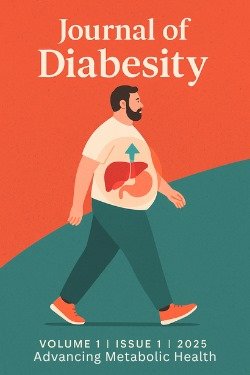Self-Reported Symptoms of Empagliflozin Discontinuation – An Online Survey
Keywords:
empagliflozin side effectsAbstract
ABSTRACT
Background and Aim: Sodium-glucose cotransporter 2 inhibitors (SGLT2i) represent a new class of antidiabetic medications that offer benefits such as weight reduction and a decreased risk of cardiovascular diseases. Nevertheless, the use of SGLT2i is associated with a range of potential side effects.The present study aimed to analyze the rate of discontinuation for empagliflozin and investigated the incidence of its side effects.
Patients and Methods: This study employed a cross-sectional design using an online survey to collect data of 567 patients on pots-withdrawal symptoms of empagliflozin. Adults (≥ 18 years) who had taken empagliflozin for at least three months and had discontinued for any reasons included. Participants recruited through online platforms, including social media and online forum. The survey collected demographic information, empagliflozin use and discontinuation, reasons for discontinuation, and post-withdrawal symptoms. SPSS version 26 used for statistical analysis.
Results: Out of 567 patients, majority of patients prescribed Jardiance for diabetes 75% (n=425) and heart failure 25% (n=142). Genital infections 27% (n=109) and UTIs 22% (n=90)were the leading reasons for discontinuation followed by Dry mouth/frequent urination 17% (n=70), Lack of efficacy 14% (n=55), low blood pressure 11% (n=45), and Ketoacidosis 9% (n=35). About 67% (n=231) cases withdrawal was perceived due to adversely affect. Headache 20% (n=60) and swelling 17% (n=50) were the most common post-withdrawal symptoms.Majority of patients 68% (n=200) chose not to resume Jardiance, while 19% (n=55) considered restarting it.
Conclusion: The rate of discontinuation for empagliflozin in managing heart failure and diabetes is relatively low, indicating its effectiveness in improving glycemic control, cardiovascular outcomes, and weight loss. Empagliflozin has been shown to reduce the mortality and risk of hospitalization heart failurepatients with improve weight loss, glycemic control, and reduced ejection fraction in type 2 diabetes patients.
Downloads

Downloads
Published
Data Availability Statement
All data generated or analyzed during this study are included in this published article.
License
Copyright (c) 2025 Journal of Diabesity

This work is licensed under a Creative Commons Attribution 4.0 International License.
All articles published in the Journal of Diabesity (JOS) are licensed under the Creative Commons Attribution 4.0 International License (CC BY 4.0).
What this means:
Under the CC BY 4.0 license, authors retain copyright of their work, while allowing others to:
-
Share — Copy and redistribute the material in any medium or format
-
Adapt — Remix, transform, and build upon the material for any purpose, even commercially
Conditions:
Users must provide appropriate attribution to the original author(s) and source, including:
-
The article title
-
Author(s) name(s)
-
Journal name (Journal of Diabesity)
-
DOI or link to the original article
-
An indication if changes were made
There is no restriction on commercial use or derivative works, as long as proper attribution is given.
Full License Text:
https://creativecommons.org/licenses/by/4.0/
✍️ Author Rights:
-
Authors retain copyright and grant JOS the right of first publication.
-
Authors may archive the published version in institutional repositories, personal websites, or other platforms with proper citation.





